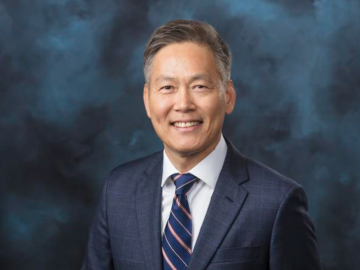
Filter News
Area of Research
- (-) Biology and Environment (30)
- (-) Materials (88)
- Advanced Manufacturing (7)
- Building Technologies (1)
- Clean Energy (59)
- Climate and Environmental Systems (1)
- Computational Biology (1)
- Computational Engineering (3)
- Computer Science (15)
- Electricity and Smart Grid (1)
- Functional Materials for Energy (2)
- Fusion and Fission (3)
- Fusion Energy (3)
- Isotopes (5)
- Materials Characterization (2)
- Materials for Computing (15)
- Materials Under Extremes (1)
- Mathematics (1)
- National Security (21)
- Neutron Science (27)
- Nuclear Science and Technology (2)
- Quantum information Science (6)
- Supercomputing (108)
News Topics
- (-) Computer Science (34)
- (-) Materials (78)
- 3-D Printing/Advanced Manufacturing (27)
- Advanced Reactors (4)
- Artificial Intelligence (15)
- Big Data (10)
- Bioenergy (51)
- Biology (73)
- Biomedical (20)
- Biotechnology (13)
- Buildings (5)
- Chemical Sciences (35)
- Clean Water (14)
- Climate Change (43)
- Composites (11)
- Coronavirus (14)
- Critical Materials (13)
- Cybersecurity (5)
- Decarbonization (25)
- Energy Storage (37)
- Environment (100)
- Exascale Computing (6)
- Frontier (6)
- Fusion (8)
- Grid (8)
- High-Performance Computing (24)
- Hydropower (8)
- Irradiation (1)
- Isotopes (13)
- ITER (1)
- Machine Learning (11)
- Materials Science (82)
- Mathematics (3)
- Mercury (7)
- Microscopy (34)
- Molten Salt (3)
- Nanotechnology (42)
- National Security (5)
- Net Zero (3)
- Neutron Science (36)
- Nuclear Energy (16)
- Partnerships (12)
- Physics (30)
- Polymers (18)
- Quantum Computing (3)
- Quantum Science (11)
- Renewable Energy (2)
- Security (3)
- Simulation (15)
- Space Exploration (2)
- Summit (11)
- Sustainable Energy (42)
- Transformational Challenge Reactor (3)
- Transportation (15)
Media Contacts

Andrew Lupini, a scientist and inventor at ORNL, has been elected Fellow of the Microscopy Society of America.

Oak Ridge National Laboratory scientists exploring bioenergy plant genetics have made a surprising discovery: a protein domain that could lead to new COVID-19 treatments.

Andrew Ullman, Distinguished Staff Fellow at Oak Ridge National Laboratory, is using chemistry to devise a better battery

Ho Nyung Lee, a condensed matter physicist at the Department of Energy’s Oak Ridge National Laboratory, has been elected a Fellow of the Materials Research Society.

A series of new classes at Pellissippi State Community College will offer students a new career path — and a national laboratory a pipeline of workers who have the skills needed for its own rapidly growing programs.

Alice Perrin is passionate about scientific research, but also beans — as in legumes.

Environmental scientists at ORNL have recently expanded collaborations with minority-serving institutions and historically Black colleges and universities across the nation to broaden the experiences and skills of student scientists while bringing fresh insights to the national lab’s missions.

Warming a crystal of the mineral fresnoite, ORNL scientists discovered that excitations called phasons carried heat three times farther and faster than phonons, the excitations that usually carry heat through a material.

Oak Ridge National Laboratory scientists set out to address one of the biggest uncertainties about how carbon-rich permafrost will respond to gradual sinking of the land surface as temperatures rise.

When Addis Fuhr was growing up in Bakersfield, California, he enjoyed visiting the mall to gaze at crystals and rocks in the gem store.


